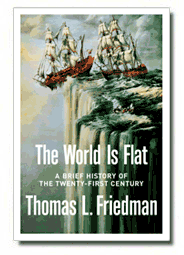 If you listen to it, you’ll know it is populated with expletives, drug dealers turned emcees, the size of fly bling, rims, and booty in the strip club. The music seems to perpetuate a lifestyle denigrating women, homosexuals, whilst all the while advocating violence and self-destruction in pursuit of the almighty dollar bill.
If you listen to it, you’ll know it is populated with expletives, drug dealers turned emcees, the size of fly bling, rims, and booty in the strip club. The music seems to perpetuate a lifestyle denigrating women, homosexuals, whilst all the while advocating violence and self-destruction in pursuit of the almighty dollar bill. Although, Snoop Dogg (and others) made a living from it since the 1980’s, it’s popularity really became commercially evident in the 1990’s, with the release of Dr. Dre's album, 'The Chronic' in 1992.
Criticism has come from both right wing and left wing commentators, religious leaders and black activists alike. In August 2006, civil rights activist -- the Rev. Al Sharpton warned of the dangers of doing nothing about the glorification of the gangster lifestyle.
Many people strongly believe, that Gangsta rap fosters criminal behavior amongst our ‘impressionable’ youth. Many have tried to quantify this tangible effect and though there have been varying results -- the majority lean with the argument that music (more so than television) has an effect on social behavior. (David Gordon, 2006)
There are many ethical issues at stake here. For instance, many Gangsta rappers often defend themselves by claiming they are only describing their reality of inner-city life, which leads me to question how they can justify making such vast amounts of personal profit from this exploitation. To what measure is it ethical and acceptable to profit from the plight of poor black conditions? The quandary deepens should it be proven that this behavior also inspires new and more illicit activity as well.

The rivalries between East and West Coast rap artists have led to countless deaths already. Two high profile rappers 2Pac Shakur and Biggie Smalls have already succumbed to their end in high profile drive by shootings. Record companies capitalized on the glorification of gang violence in rap music. These are people who can’t even defend themselves with the argument they are ‘describing the reality of their lives’.
 The other day, we watched a snippet from “Born into Brothels’. We agreed it’s film-makers probably profited in some way or another, but at the end of the day there was not one person who accused it of encouraging inner-city depravation as we suspect Gangsta rap does.
The other day, we watched a snippet from “Born into Brothels’. We agreed it’s film-makers probably profited in some way or another, but at the end of the day there was not one person who accused it of encouraging inner-city depravation as we suspect Gangsta rap does.Put that next to 'Get Rich or Die Tryin'; another film depicting inner city life loosely based on rapper 50 Cent’s gangland reality and violent experiences and you hear outrage.

To begin with, its movie poster shows 50 Cent (real name Curtis Jackson) with his arms outstretched, a microphone in one hand and a gun in the other. The poster was later ammended to calm criticism:

Later on, the DVD box looked like this:

Nevertheless, Jim Sheridan, who directed the film is an aclaimed director of ‘My Left Foot’ fame. Surely, he felt the project was worthwile.  In the movie, Jackson plays Marcus, a low level drug dealer turned rapper on the mean streets of New York. Tough is a big understatement when your father isn't around and your mom's busy pushing drugs. His rap dreams aren't solely based on fleeing his past.
In the movie, Jackson plays Marcus, a low level drug dealer turned rapper on the mean streets of New York. Tough is a big understatement when your father isn't around and your mom's busy pushing drugs. His rap dreams aren't solely based on fleeing his past. It is a new perspective on Gangsta rap. In the movie, Marcus is given the opportunity and could use violence against those who want to mortally harm him, but instead opts for a more dangerous road; one that inolves using lyrics as verbal bullets to humiliate his foes. He famously walks on stage with a bullet proof vest. He's saying that if you live in the same conditions as he did, then you have braver more nobel means than violence at your disposal. It is the gangland's alternative to 'Kids with Camera's' solution.
It is a new perspective on Gangsta rap. In the movie, Marcus is given the opportunity and could use violence against those who want to mortally harm him, but instead opts for a more dangerous road; one that inolves using lyrics as verbal bullets to humiliate his foes. He famously walks on stage with a bullet proof vest. He's saying that if you live in the same conditions as he did, then you have braver more nobel means than violence at your disposal. It is the gangland's alternative to 'Kids with Camera's' solution.
In one scene, 50 Cent is shot nine times. He was shot nine times in real life too. Some say his album by the same name, ‘Get Rich or Die Tryin’, reveals the emotion that makes 50 Cent a powerful musical artist. The album was a huge commercial success, making him one our richest rappers!
 However, When you choose to entertain with violent and sexist images, you run the risk of numbing kids (and adults too) to its effects. People consume this material very differently. An individual’s psyche may respond negatively to this type of stimulation. We can’t prevent kids from seeing this stuff and ‘misunderstanding’ its meaning and growing up to think it’s just ok to behave the same way. In the movie, Marcus himself comments that “Parents think you see nothing, but the truth is you see everything."
However, When you choose to entertain with violent and sexist images, you run the risk of numbing kids (and adults too) to its effects. People consume this material very differently. An individual’s psyche may respond negatively to this type of stimulation. We can’t prevent kids from seeing this stuff and ‘misunderstanding’ its meaning and growing up to think it’s just ok to behave the same way. In the movie, Marcus himself comments that “Parents think you see nothing, but the truth is you see everything."
___________________________________________________
www.wl.k12.in.us/hs/clubs/scarlette/ jan27-06%5Cpage3Scarlette012706.pdf
Gordon, D. W. (2006, Nov) The Effect of Gangsta-Rap Radio on Urban Homicide Paper presented at the annual meeting of the American Society of Criminology (ASC), Los Angeles Convention Center, Los Angeles, CA
Film: Get Rich or Die Tryin’ (2005)



























